Latest Posts

The Nonparaxial Gaussian Beam Formula for Simulating Wave Optics
Here’s your introduction to the nonparaxial gaussian beam formula, which is used for simulating wave optics problems in COMSOL Multiphysics®.
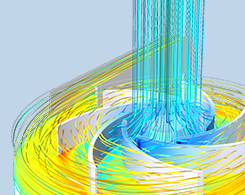
Analyzing a Centrifugal Pump Design with Frozen Rotor Approximation
Mechanical engineers can analyze the design of centrifugal pumps using the Frozen Rotor Approximation, which is available in the Mixer Module, an add-on to the CFD Module.

Modeling Copper Electrodeposition on a Circuit Board
Copper electrodeposition is used to manufacture PCBs. Here, we discuss modeling the electrodeposition of copper in the trench of a PCB.

Modeling a MOS Capacitor with the Semiconductor Module
MOS capacitors (MOSCAPs) contain 3 main parts: a semiconductor body or substrate, an insulator film, and a metal electrode (or gate). You can use the Semiconductor Module to model MOSCAP designs.

Happy Birthday, Blaise Pascal
Blaise Pascal was a mathematician who wanted to make mathematical calculations easier. His work in projective geometry led to what is now known as Pascal’s theorem.
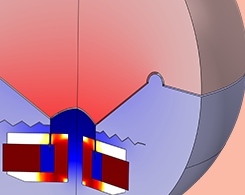
How to Perform a Nonlinear Distortion Analysis of a Loudspeaker Driver
For a thorough and complete analysis of a loudspeaker driver design, acoustics engineers need to perform nonlinear time-domain studies in addition to frequency-domain studies.
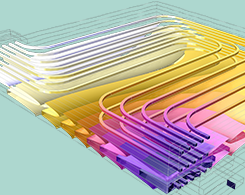
Fueling Up for Autonomous Driving with Optimized Battery Designs
What good are fully autonomous vehicles if they run on fuel? To develop hybrid and electric autonomous vehicles, we need to design efficient and optimized battery management systems.
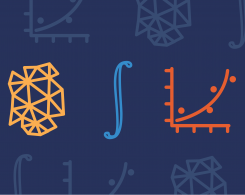
Your Guide to Meshing Techniques for Efficient CFD Modeling
Learn how to use a variety of meshing tools for your CFD analyses, including mapped mesh, unstructured quad mesh, triangular mesh, tetrahedral mesh, swept mesh, boundary layer mesh, and more.

How to Use the Cluster Sweep Node in COMSOL Multiphysics®
Keep your cluster admin happy by using the Cluster Sweep node in COMSOL Multiphysics® to optimize the parallelization of parametric computations on clusters.

How to Set Up a Mesh in COMSOL Multiphysics® for CFD Analyses
As a flow mechanics specialist preparing a mesh for CFD analysis, the geometry supplied by a CAD team is often exactly what you do not want. So, what do you do?

Happy Birthday, Henry Darcy
Henry Darcy was a civil engineer whose study of fluid dynamics led to the formulation of the equation now known as Darcy’s law. It also helped supply his small town in France with drinking water.
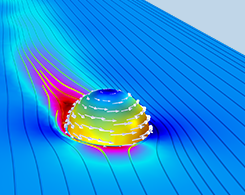
Does It Matter Which Ball the FIFA World Cup™ Teams Practiced With?
In an attempt to determine what type of soccer ball is best to prepare for the FIFA World Cup™, we set up a backyard experiment involving a leaf blower, level, and a few soccer balls.

Optimizing Combustion Particle Control in an Electric Filter Design
To optimize the design of an electrostatic filter, researchers from Switzerland used multiphysics modeling, validating their results by comparing them to experimental data.

How to Create Animations Along the Azimuthal Direction for 3D Models
Here’s a useful postprocessing trick for presenting your 3D modeling results: combine slice plots along the azimuthal direction in order to generate a nontrivial animation.
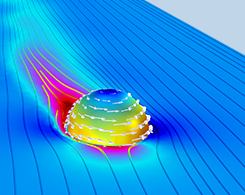
Terminal Velocity, Drag Coefficients, and FIFA World Cup™ Predictions
Is it possible to predict the winners of the FIFA World Cup™? We forgo consulting a psychic and instead analyze the terminal velocity and drag coefficients of different balls with CFD simulation.
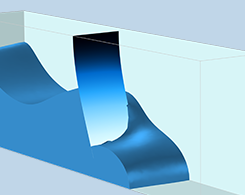
Modeling Free Surfaces in COMSOL Multiphysics® with Moving Mesh
You can model free liquid surfaces that do not undergo topology changes using moving mesh functionality in the COMSOL® software. Here’s a thorough guide on how to do so.
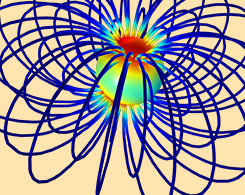
Studying the Van Allen Belts with Particle Tracing Simulation
Get a closer view of the Van Allen belts, 2 donut-shaped belts of radiation that surround Earth, with the help of particle tracing software.
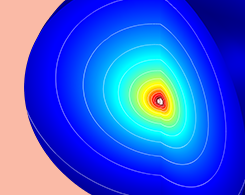
What Is the Doppler Effect?
A siren passes by and you hear a change in pitch. A bug swims across a puddle, causing ripples on the surface. A star in the sky has a reddish hue. These are all examples of the Doppler effect.

How to Model Conductors in Time-Varying Magnetic Fields
You can use the AC/DC Module to perform frequency-domain simulations for conductors in time-varying magnetic fields by describing the skin effect.
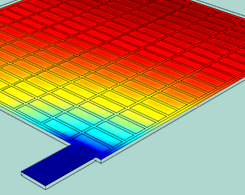
Analyzing the Current Distribution in a Lead-Acid Battery Design
The lead-acid battery in your car is not much different from the original one developed by Gaston Planté in 1859. 1 change is that you can now analyze the current distribution using simulation.
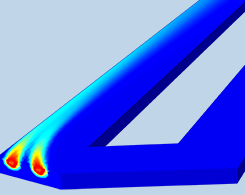
Analyzing Multiphase Flow in an Airlift Loop Reactor Benchmark Model
This blog post features a benchmark model of an airlift loop reactor that validates the use of CFD simulation for analyzing multiphase flow.

Happy Birthday, Gustave-Gaspard Coriolis
Gustave-Gaspard Coriolis’s research into mechanical systems has had far-reaching effects. In fact, the Coriolis effect is used to describe the rotation of Earth, which can be observed from space.
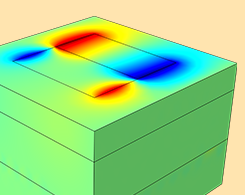
Analyzing Magnetotellurics with Electromagnetics Simulation
Magnetotellurics (MT) is a geophysical method for mapping the magma flow of volcanos. Using electromagnetics simulation, engineers are able to study and improve this technique.
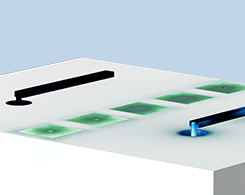
Studying the Decoupling Effect of Electromagnetic Band Gap Structures
Electromagnetic band gaps (EBGs) can suppress unwanted EMI and increase desired EMC between antennas, improving their performance. Learn how to study this decoupling effect via simulation.
